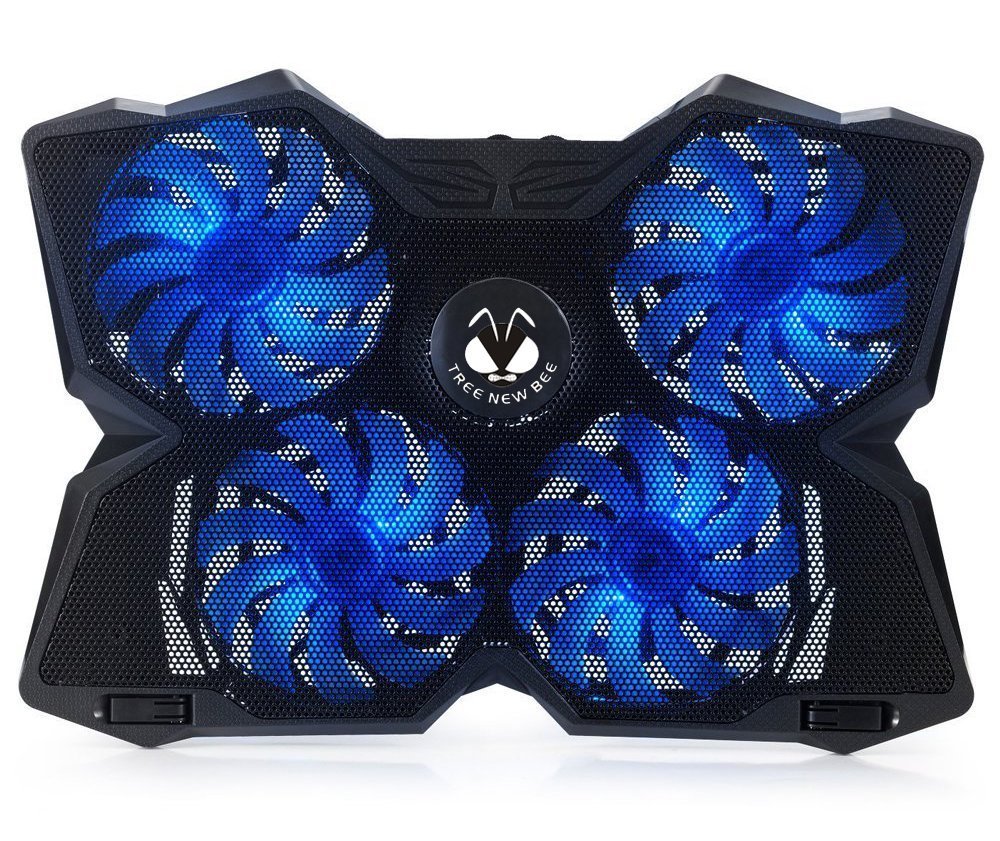How laptop coolers may help protect against overheated parts and sweaty legs
Laptops are getting thinner and lighter, but they are also becoming more powerful and kicking out more heat. Luckily, there are some handy coolers available for times when it's simply too toasty.

The thinner and more compact laptops become, generally, the less amount of space is reserved for cooling internal components. Intel processors are becoming more power efficient too, and in less potent, more portable options this isn't too much of an issue. But when you start moving up the CPU chain, things start heating up rather quickly, especially if you happen to carry out heavy workloads with the laptop resting on your legs. This is where laptop coolers come into play.
A laptop cooler is essentially a pad of sorts that sits underneath the laptop, be it on a desk or on your lap. This accessory can make it more comfortable to use the laptop itself, as well as keeping it cool with a number of fans blowing underneath. Some solutions even come with additional connectivity to expand the number of ports available. Not only are these products useful for laptops with fans (to prevent them from sounding like jet engines) but they're also handy for less powerful units that kick out some heat without any blowers.
When looking at cooling pads, it's worth considering just where and how you'd use one as they're generally built for different situations. Some will better perform on a desk, while others may make use of more powerful fans to combat the lack of airflow when the laptop is laid down on a pair of sweaty legs in the sunshine. Others are portable so they can be packed away on trips.
It's also a requirement to take a quick look at how your laptop deals with heat, how its fans (if it has any) are configured and where the intake vents are located. A laptop with fans that draw air from underneath will make good use of the extra space offered by the laptop cooler, as well as additional airflow provided to keep both the CPU and GPU supplied with enough cool air.
Prices of laptop coolers can range from anywhere between $10 and $50, depending on build quality, the number of fans, cooling technologies used, and more. Doing a quick search on Amazon brings up a bunch of results. Here's a quick recap of what you should bear in mind when looking at listings:
- Dimensions to match the laptop.
- Fan configuration to hit intake vents.
- Additional features like LCD screens, sensors, etc.
- Whether they're best suited for flat surfaces or your lap.
- How portable they are if you travel with your laptop.
Those of you who can comfortably use your laptop(s) without issue regarding heat, you shouldn't require one of these at all.
Get the Windows Central Newsletter
All the latest news, reviews, and guides for Windows and Xbox diehards.

Rich Edmonds was formerly a Senior Editor of PC hardware at Windows Central, covering everything related to PC components and NAS. He's been involved in technology for more than a decade and knows a thing or two about the magic inside a PC chassis. You can follow him on Twitter at @RichEdmonds.
